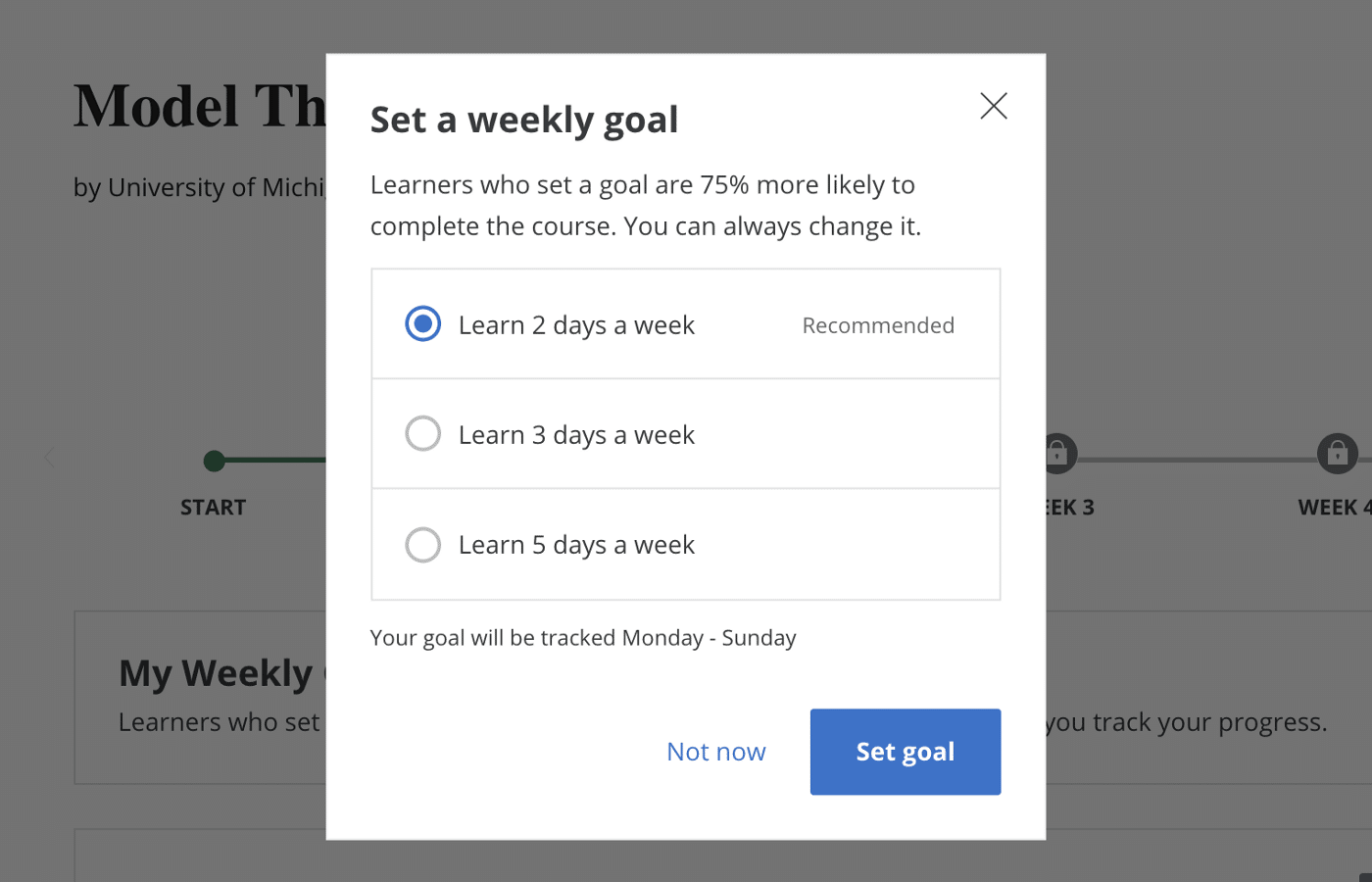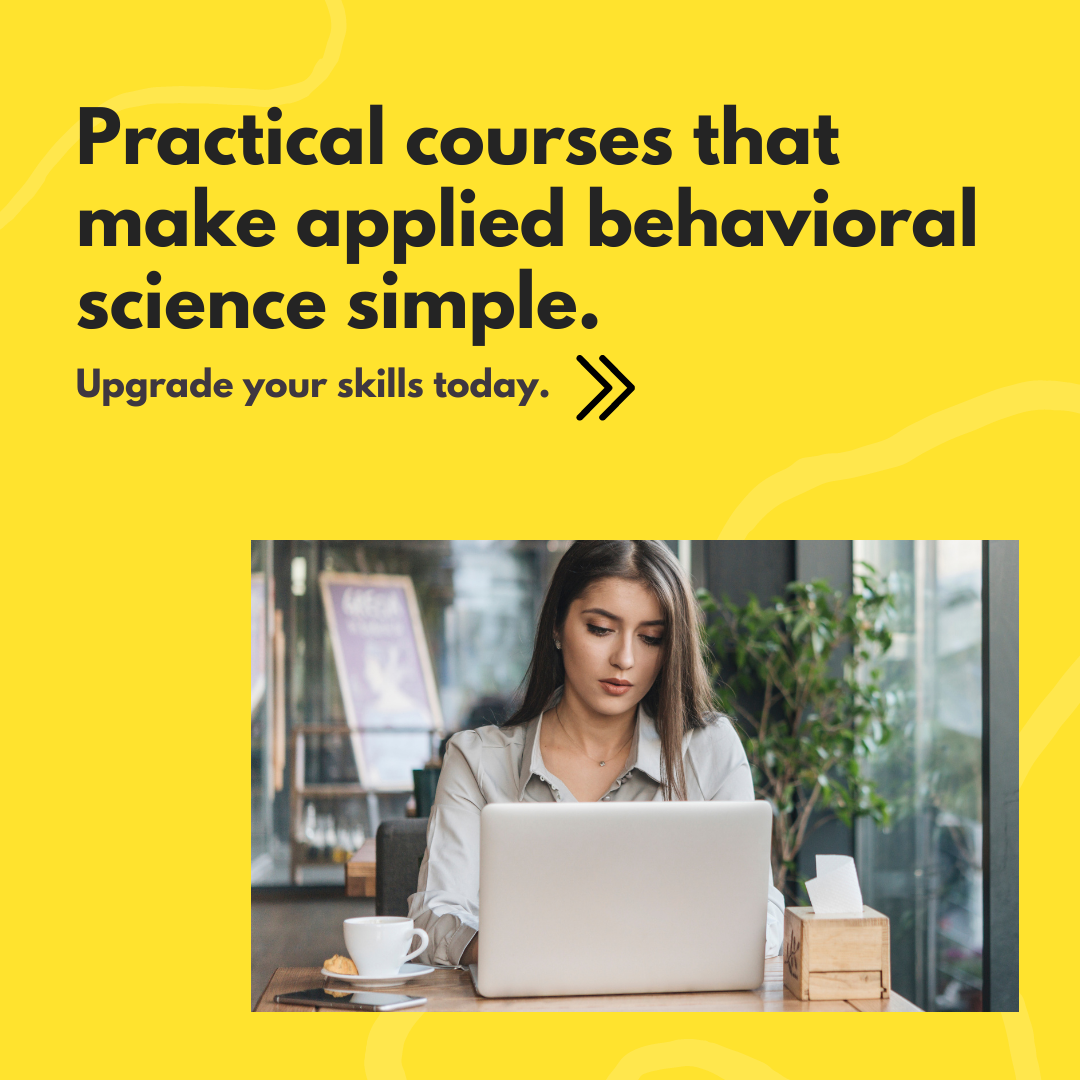More and more online learning has become an inescapable part of students’ lives (no matter their age).
Learning online can bring us great flexibility, but it also has big challenges:
- It’s hard for students to stay engaged when the rest of the internet is just a click away.
- Students forget to complete lessons, or let lessons play without paying attention.
- Online learning can feel tedious and repetitive.
In 2012, two Stanford University professors, Andrew Ng and Daphne Koller, recognized the potential of online learning to democratize higher education.
So, they created Coursera, now one of the largest online learning platforms in the world, with 124 million registered users.
Like many online education platforms, commonly known as MOOCs, Coursera has struggled with low course completion rates. Many students will start a class with high hopes, only to quit partway through. A recent study by the Massachusetts Institute of Technology (MIT) found that online courses have a 96% dropout rate on average, over five years.
To increase their completion rates Coursera applies several strategies, with underlying behavioral science and psychology principles:
1. Helping users track their progress makes them more likely to stick around
To keep students engaged, Coursera includes cues and messages that encourage learners to stay active.
Step One — Set a goal: In the example below, Coursera asks its users to set a learning goal. They know if students have a goal, the platform can communicate how far they have to go, and therefore motivate users to complete their course.
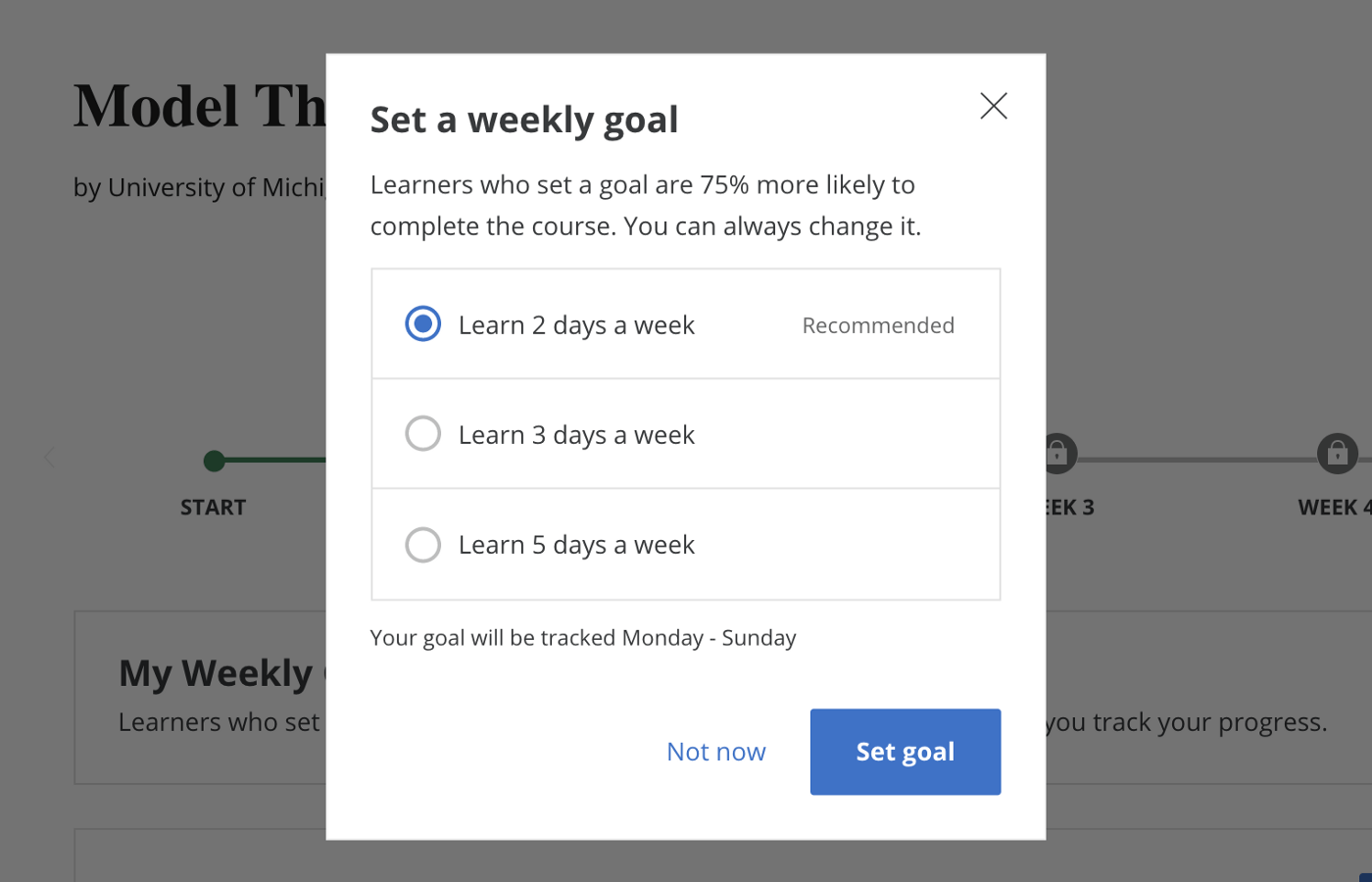
Source: Coursera.org
Research has shown that in educational settings, sending pop-up and push notifications like these can increase student retention by up to 18%.
Step Two — Communicate progress: Coursera is transparent about where students are and how much work they have to finish.
Progress indicators, like the example below, help students know exactly how much work they’ve already completed, and how much is left to go. Studies have shown that progress indicators like these, can increase user focus, enjoyment, and users overwhelmingly prefer platforms that include these elements.
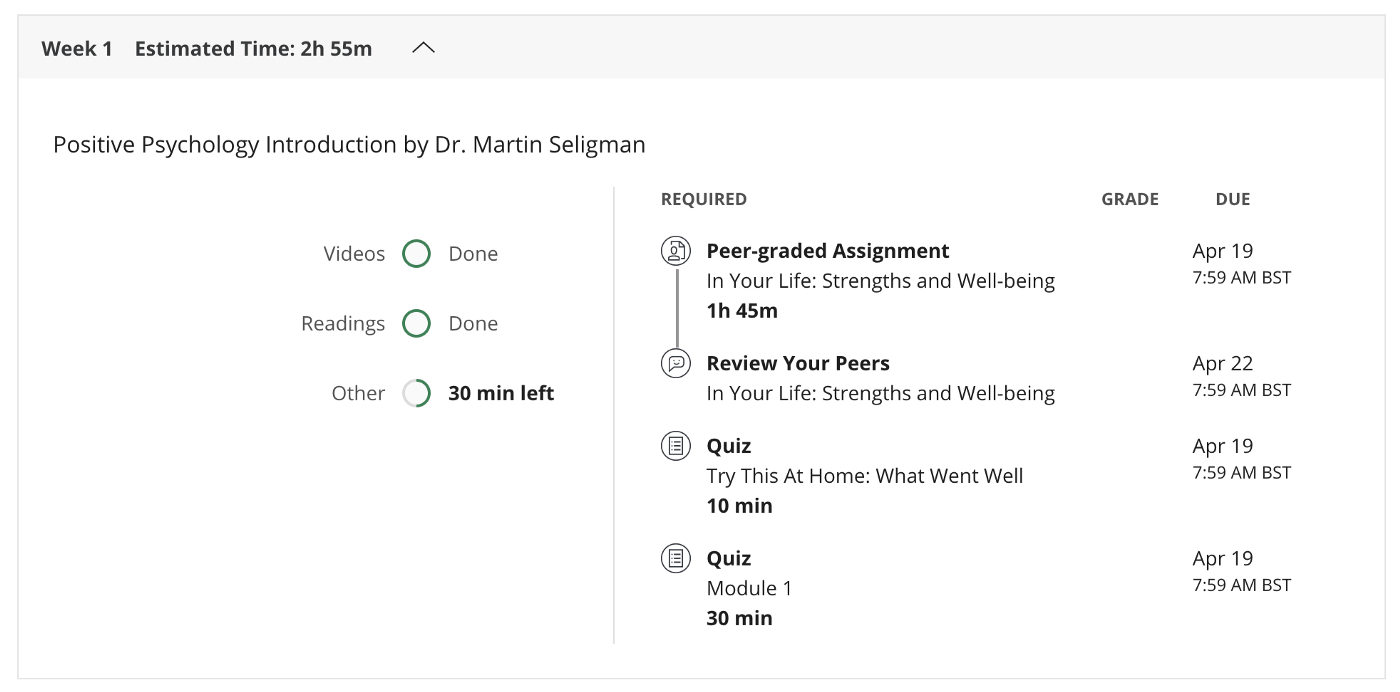
Source: Coursera.org
Why do these tactics work?
It’s down to two behavioral science principles: Pre-commitment and the Goal Gradient Effect.
1. Pre-commitment
What is Pre-Commitment?
Humans like our behaviors to stay consistent with the image we hold of ourselves. For example, someone who sees themselves as athletic is more likely to join an amateur sports league than those who don't see themselves as active.
That’s why getting ourselves to make a commitment to future behavior is one of the most powerful ways to stick to a goal.
Pre-commitment says that if we promise to do something in the future, we're less likely to procrastinate and more likely to actually accomplish that goal.
How to Apply Pre-Commitment to Your Experience
If you want users to stay engaged, ask them to commit to a very specific goal. In this case, Coursera gives users a choice of three time-based options: Learning 2 days a week, 3 days a week, or 5 days a week.
Ask your users to make a commitment for the future. Whether it's exercising 3 days a week or reading 10 minutes every day, Pre-commitment can help users stick to their goals.
2. Goal Gradient Effect
What is the Goal Gradient Effect?
Coined by American psychologist Clark Hull in 1932, the Goal Gradient Effect says that people are motivated by how much is left to reach their target, not how far they’ve already gone.
How to Apply the Goal Gradient Effect to Your Experience
To apply this principle to your customer experience, be clear about where your users are in relation to their “finish line."
You’ll often see the Goal Gradient Effect at work in gamification elements like progress bars, badges, and profile completion percentages. It can be applied anywhere users are encouraged to complete a big task by achieving smaller objectives.
For example, LinkedIn uses a progress bar combined with user data to get people to complete their profiles.

In this example, Linkedin tells users, "Members with 5 or more skills are 27x more likely to be discovered in search by recruiters." By tying users’ profile completeness to their goal of a new job, LinkedIn makes it feel like users can reach their goal by completing a few simple tasks.
2. Paying for a Course Increases Completion Rates
The Coursera business model was initially based around free classes. But when it comes to getting students to complete a course, “free” isn’t the best strategy. Paying a fee — even if it’s small — results in students staying engaged.
The New York Times reported that “10 percent or fewer students complete free courses, while the completion rates for paid courses that grant certificates or degrees range from 40 percent to 90 percent.”
Why? It’s down to a behavioral science principle known as Commitment / Consistency.
What is Commitment / Consistency?
Coined by author and professor Robert Cialdini, this principle states that people are highly driven to be and look consistent. We want to keep our actions consistent with what we’ve already committed to.
Psychologists view this desire for consistency as one of the most important drivers of human behavior.
How to apply Commitment / Consistency to Your Experience
To apply this principle to your marketing or product design, get your users to make an easy, low-stakes commitment to the activity you want them to undertake.
For example, outdoor supply store REI offers a lifetime co-op membership for only $20. Once a customer signs up, they get lots of free perks and can even get paid money from the annual REI dividend — a way that REI pays back co-op members a share of their profits.
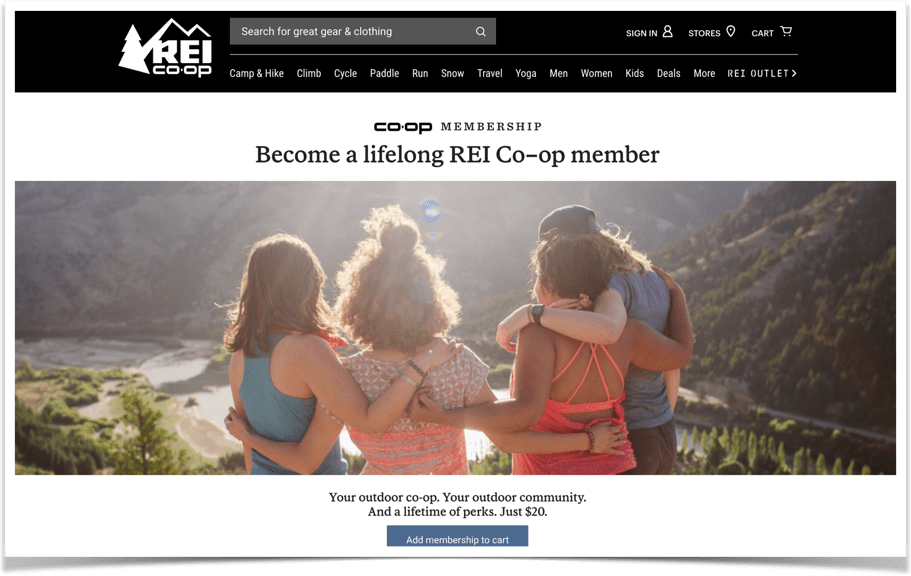
Source: REI.com
By offering a low-stakes commitment, REI increases the chances that customers will be loyal to their brand over the long term. If customers see themselves as people who’ve made a commitment to REI, they want to stay consistent to this belief and shop there more.
3. Using Data to Nudge Users Can Increase Completion Rates
The advantage that online education platforms like Coursera have over in-person classes is the ability to track how frequently students watch videos, submit assignments, and complete quizzes. These platforms can use this information to “nudge” students into finishing their modules with messages sent at key moments.
What are Nudges?
Nudging describes how manipulating the way information is presented can make it easier for people to select the “right” or optimal choice.
Research from Copenhagen Business School found that sending email nudges in made students 1.5x more likely to view lecture videos and spend 15% more time viewing online lectures than their peers.
But keep in mind — different types of nudges work better for different types of students.
Studies suggest that negatively framed messages — such as “If you don’t watch this video, you’ll lose 10 points off your final grade” — work better for low-performing students. However, positively framed messages — such as “If you complete this lesson you’ll earn 3 more points toward your final grade” — are more effective for high-performing students.
So be mindful of the different types of users you have, and how you might frame nudges for each of them. Experiment to figure out who these user groups are, and what messages are most effective for each.
How to Apply Nudges to Your Experience
There are many types of nudges that you can use to encourage user engagement.
Good places to include nudges are those moments where customers drop off, forget to do something, or tend to make the “wrong” decision.
For example, the language learning app Duolingo famously uses many different nudging strategies and prompts users via pop-up notifications.
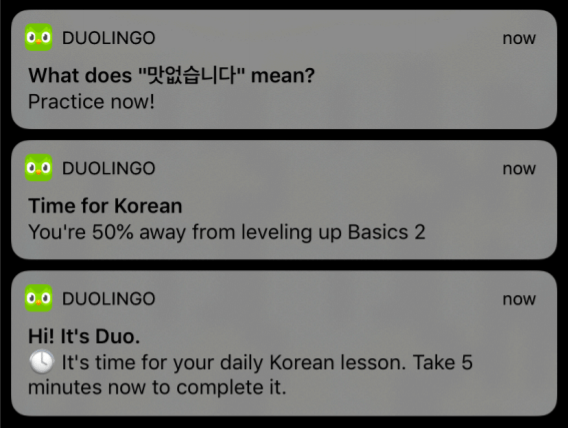
Source: Google Images
The Bottom Line
When it comes to making your business more engaging, platforms like Coursera have used billions of data points to develop proven strategies.
But underlying their success are behavioral science and psychology principles that can be applied to any industry or business.
To apply these principles, start by asking yourself:
- Goal Gradient Effect: Are we communicating where users are in our experience clearly and simply? Do users know how much they’ve already accomplished and how much is left to go?
- Pre-Commitment: Are we overlooking opportunities to get customers to make a promise to themselves?
- Nudges: Are there key moments in our customer journey where a nudge can help get people re-engaged?

